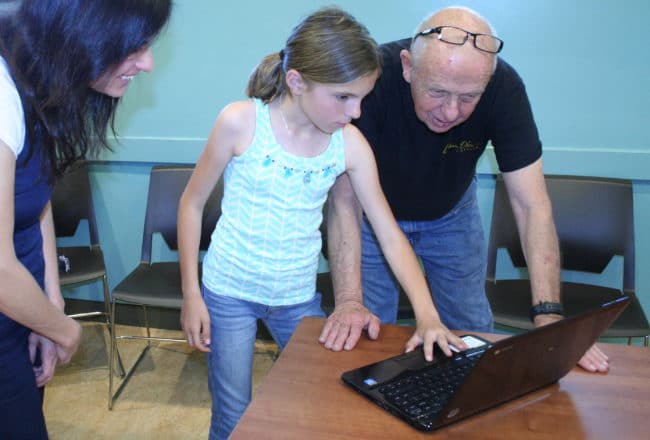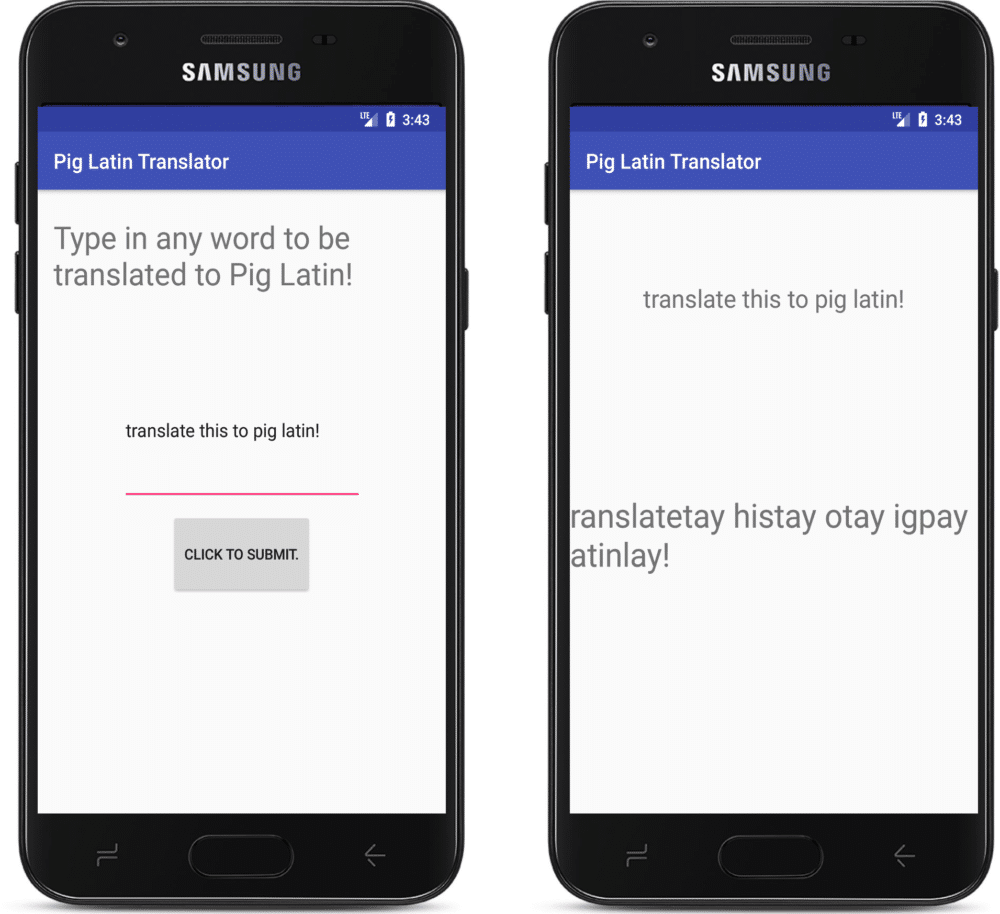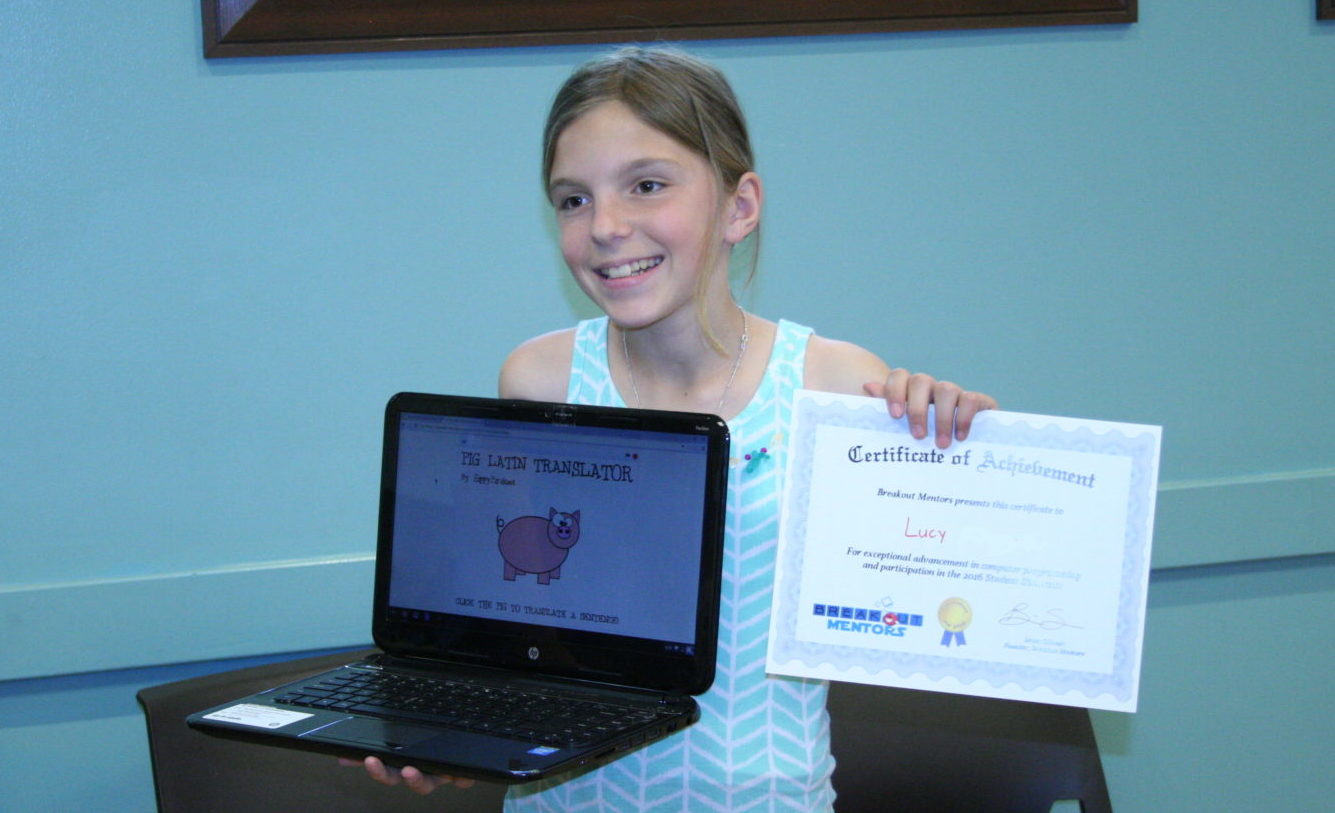“igpay atinlay anslatortray”
If you were once a kid, you may recognize the above as Pig Latin.
Recently, a Breakout Mentors student created a Pig Latin translator app for Android phones using Java. This young lady from Oakland is only 14 years old, but has been coding for years now!
How did she get to where she is now?
First Coding with Scratch
Lucy received a Scratch (drag-and-drop) book for Christmas in 2014 when she was 11 years old.
She worked through the book pretty quickly, but it wasn’t until she started working with Breakout Mentors the following year that Lucy started making more complex and conceptually advanced coding projects.
One of those projects was a Pig Latin Translator presented at the 2016 Breakout Mentors Student Showcase:
What is Pig Latin?
It is a language of sorts, formed by modifying the words in English. The quote at the beginning of this article says “pig latin translator” in Pig Latin!
The rules are fairly straightforward. Given a word, take its first letter, remove it and append it to the end of the word, along with “ay”. For example, given the word “cookie”, its Pig Latin translation would be “ookiecay”; “happy” would be “appyhay”.
However, there are a few notable exceptions, as some words do not follow this particularly simple structure. If a word starts with a particular consonant group or sound (such as “ch”, “th”, “sh”, “qu”, etc), this group is instead removed and appended, as opposed to just the first letter. So, as examples, “change” would translate to “angechay” and “quiet” would translate to “ietquay”. Finally, given a word that begins with a vowel, the first letter is not removed, and “way” (not “ay”!) is simply appended to the end of the world. For example, “apple” would translate to “appleway”; “exit” would translate to “exitway”.
Got it?
Didn’t think so… adults don’t put in the effort to understand and translate the Pig Latin to English, so kids have their own language!
Back in the Day…

I specifically remember first learning about Pig Latin from my early grade school days, where students who knew of the language loved using it to “secretly” communicate.
To maintain its secrecy, people wouldn’t share how the language worked, but eventually, word would spread and everyone at least understood the basic structure. Once some kids knew how it works, they kept perfecting the speed of their translations!
When you say Pig Latin out loud, it is actually surprisingly effective at drawing confusion. This is likely why it is still so popular and fun to use.
Lucy’s Coding Education Path
Scratch is a great platform for starting any coding beginner – it is a simple drag-and-drop style interface presented in a fun, unintimidating way. It includes the core programming logic yet is excellent at creating fun projects on day one.
Hopefully, kid coders outgrow Scratch one day, though.
Sometimes kids proclaim a desire to do “real coding” where they have to type it. Other times, especially with very creative students, they want to continue bringing their project ideas to life. Switching to a language like Python or Java is a step back in the ability to quickly create.
This was the case with Lucy. The slow progress learning a language like Python was not as appealing. This transition is delicate and an area of strength for our one-on-one mentors.
A mentor can shield the more frustrating parts of beginner typing code. Things are as simple as typos. Their excitement and encouragement help kids keep going.

On To Python
Python is one of the most popular programming languages. In Python, you type the code, but it includes graphics so you can create video games and other visual projects.
Lucy spent months jumping back and forth between Scratch and Python. We wanted to encourage her love for coding and creativity in making projects, but the new language was a step back in this area.
So Lucy’s mentor provided a more gradual transition instead. Some time in Scratch, she pushed her comfort zone while making fun projects. Some time in Python, which wasn’t as creative yet.
Over time, Lucy’s abilities grew in Python, and she was comfortable using it to bring her ideas to life.
Java for Android
Breakout Mentors students create large-scale projects as they master the coding fundamentals. Once they reach a certain level of proficiency, the world of possibilities open up.
Lucy set the goal to make an app for her Android cell phone.
The language for this is Java, and the tools are much more advanced – it is used by professional programmers, not just school students. This brought on many new challenges, including “object-oriented programing”: essentially, using code “objects” that perform actions or have actions performed upon them. This difference is non-trivial, and the shift in approach takes a bit of time to master.
What was her main project this fall? A Pig Latin translator, of course!

Coding in the Real World
What is the point of learning to code? To bring actual projects into the world, develop critical thinking and leadership skills that apply in any discipline, and open future doors in your life.
How does Breakout Mentors help with that? Here is what her mother said:
Lucy’s mentors don’t tell her what to do, they help her figure it out. They push her to make her projects better and more complex. They treat her like a peer and do things like white boarding sessions and have passionate discussions about programming logic during her sessions. I get a monthly update on her progress directly from her mentor.
Lucy’s first two mentors were women, which was amazing. And an added benefit is she loves going to the CAL engineering library every week, wants to be an engineer and attend MIT! It’s ignited her passion about STEM subjects and she is so driven now. This program is truly amazing. I can’t say enough good things about it.
Congratulations to Lucy on all her success so far, everyone at Breakout Mentors is excited for what the future holds for her!
